I’m calling it: Cape Town is the most beautiful city in the world.
I’ve been fortunate to have visited over 500 cities during my 13 years of full-time travel; needless to say, I’ve seen a whole lot of beautiful places. Rio de Janeiro? Sydney? Rome? Paris?
They all have nothing on Cape Town.
This is a city that has so much to offer its visitors. Backed by the sweeping rock curtain of Table Mountain, Cape Town is so visually spectacular from the moment you step foot on its streets. Below the mountain, its downtown streets run along a plateau that eventually reaches a beautiful waterfront where whales and dolphins roam.
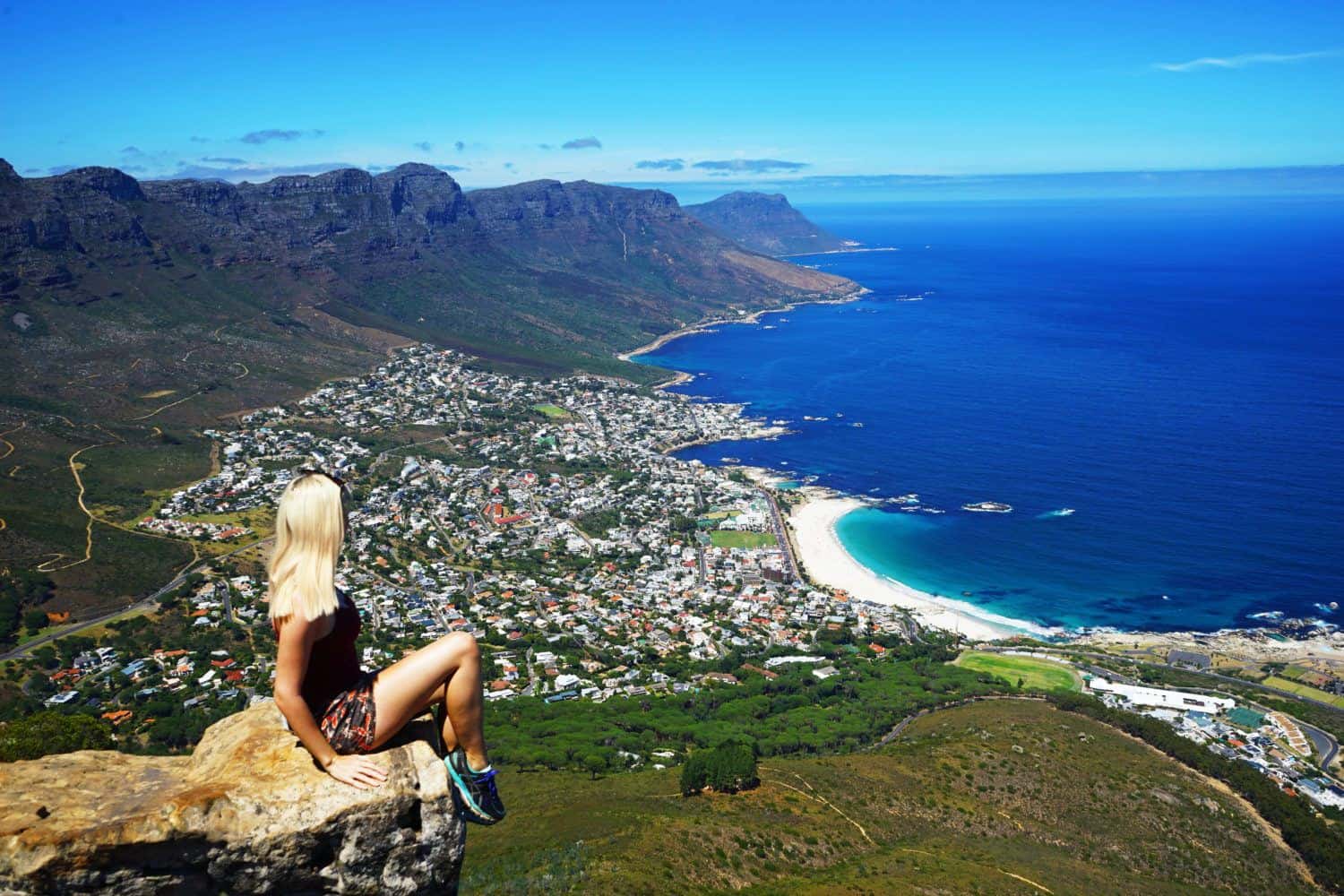
Some of my personal highlights included exploring the colourful neighbourhood of Bo-Kaap, shopping for souvenirs at the Neighbourgoods Market in Woodstock, hiking to Lion’s Head, and swimming with wild penguins. I felt like a local, too, when I spent the afternoon at a concert in Kirstenbosch then followed it up with a sunset picnic on Signal Hill.
And I haven’t even mentioned the excellent food, world-class wineries, and white-sand beaches yet.
I recently spent two weeks in Cape Town and haven’t been able to stop singing its praises since. This is a city that ticks every single box and I’m already planning my return visit.
Today, I’m going to be kicking off my South Africa coverage with an in-depth guide to my new favourite city. Here are all of the best things to do in Cape Town.
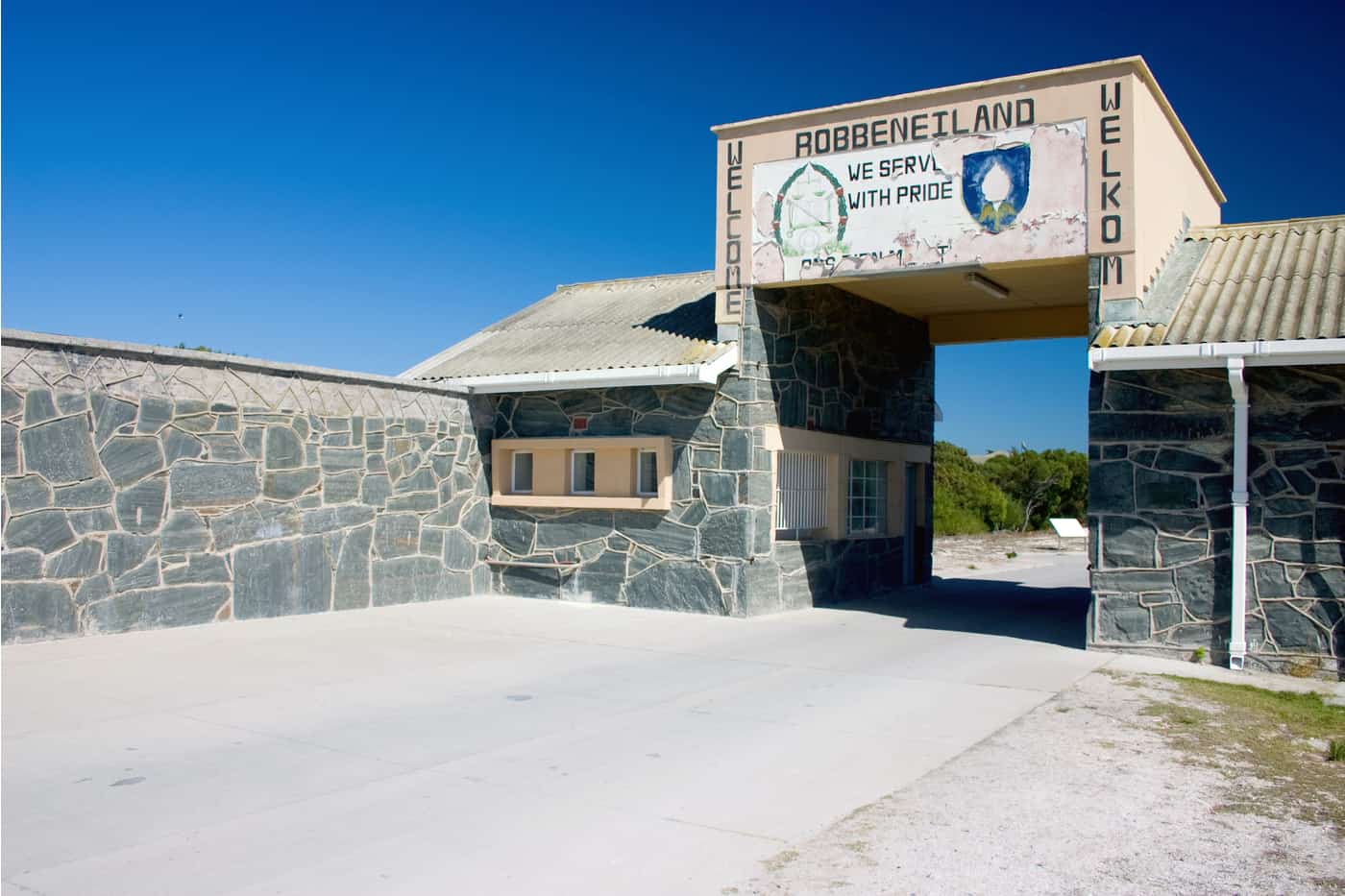
Visit Nelson Mandela’s cell
Accessible via ferry, Robben Island, the home to the prison that held Nelson Mandela, is the key to unpacking the complex history of Cape Town and South Africa. From the Nelson Mandela Gateway on the city’s waterfront, enjoy a 30-minute trip through Table Bay to the island where a prison remained in operation for almost 400 years.
18 of those 400 proved to be the most important when Mandela served time here in a tiny cell during the apartheid. After getting your first glimpse into the ordeal at the Nelson Mandela Gateway, begin your tour of the now closed maximum security prison along with the lime quarry. Here, prisoners endured strenuous labor with crude tools and no end in sight.
After seeing the iconic figure’s prison cell, you can achieve some understanding of the hellish situation Mandela and many others found themselves in. Certainly an immense appreciation for Nelson Mandela’s ability to persevere. What make’s the tour so memorable is that it’s led by former inmates themselves.
On this Robben Island tour ($84), visit both the island, the District Six Museum and two townships to learn more about the apartheid.
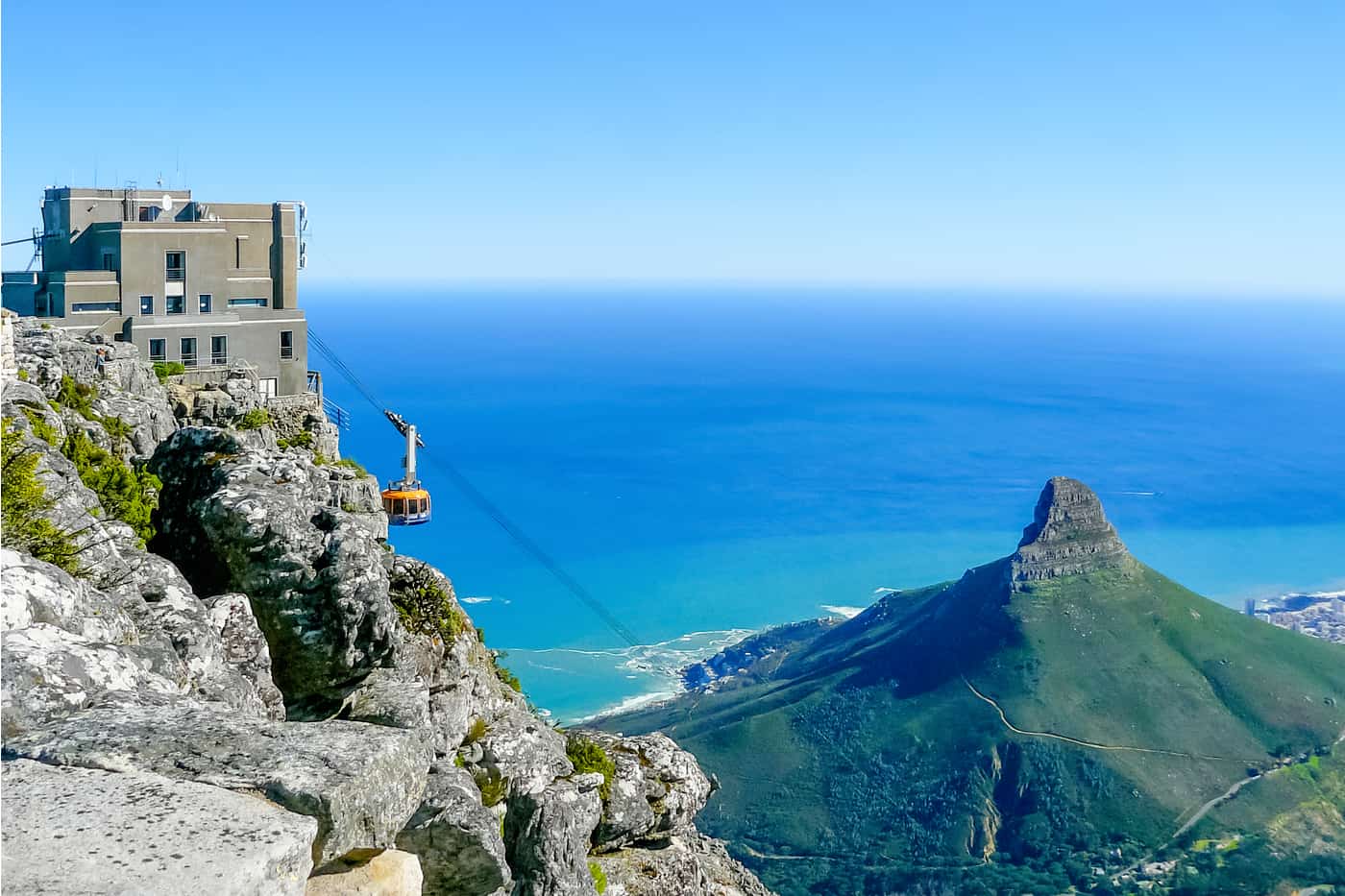
Ride the Table Mountain Aerial Cableway
Like a curtain behind the stage, Table Mountain stands proud as the city’s backdrop. The famous flat-peaked mountain was created from slate and sandstone and sits on the northern end of the Cape Peninsula. As one of the most photographed sights in South Africa, its looming presence will take some getting used to.
From the base, the stunning craggy wall shoots over 3500ft (1087m) out of ground, creating a challenging trek for hikers that wish to reach the panoramic views from the summit. There are over 350 trails that lead to the top of Table Mountain. This buffet of options can lead to paralysis of choice. To help you out, the Platteklip Gorge trail is the safest but most popular, taking anywhere from 1 to 3 hours. For something more adventurous, tackle the hair-raising Kloof Corner, which should take around an hour.
But to enjoy all the best views without any discomfort, you can ride the cableway to the summit. Climbing 4080ft (1244m) in seven minutes, you’ll soon find yourself surrounded by mesmerizing views, cafes and scenic short treks.
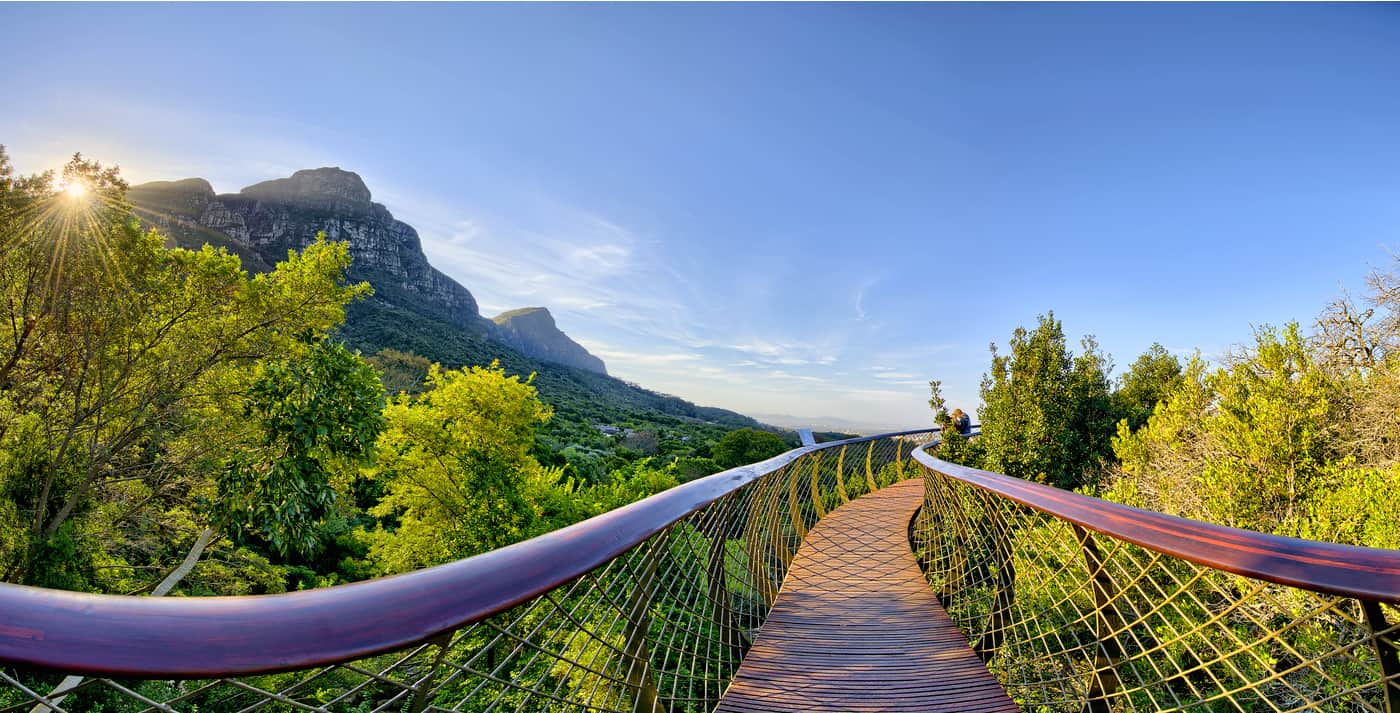
Explore the Kirstenbosch National Botanical Gardens
Depending on how you approach the Table Mountain summit, you may get a glimpse of the Kirstenbosch National Botanical Gardens. Spanning almost 90 acres, the gardens rest on the eastern end of the mountain and provide over 7000 indigenous plants, many rare and endangered.
From the entrance, grab a map and plan out your experience. There are multiple elevated canopy walkways, spaces to enjoy a picnic, and a variety of sections that show off the incredible selection of flora. Leaving time to experience each will help you make the most of your time in the UNESCO World Heritage Site.
A highlight of the Kirtstenbosch National Botanical Gardens are the prehistoric cycads that have grown in South Africa since dinosaurs roamed the earth. From there, continue on to explore the Sculpture Garden or see the desert plants growing in a custom greenhouse all before walking above the trees on the canopy walkway. Find a cozy spot to relax and enjoy a picnic before deciding what’s next. If you haven’t yet reached the summit of Table Mountain, a trail within the gardens leads to the peak.
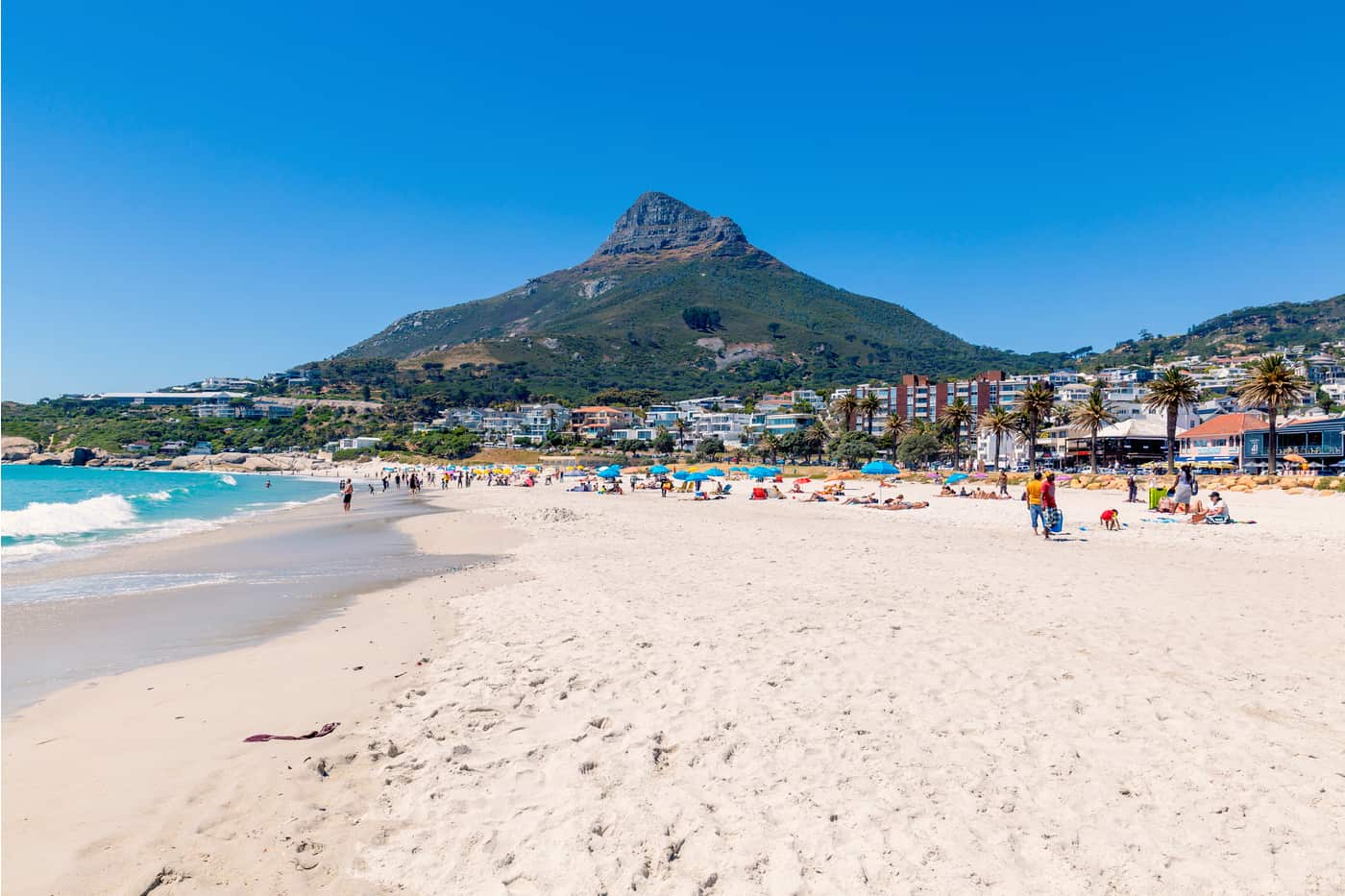
Have a beach day
Backed by soaring rugged cliffs and lush green landscapes, the white sands around Cape Town provide plenty of opportunity to unleash your inner beach bum. Just out of the city center, Camps Bay Beach and Clifton’s four golden sand beaches await those who want to chase the sun and swim in the Atlantic.
The bays attract the rich and well-to-do. Between the coast and the mountains are some of the most expensive real estate in and around Cape Town. The scenery from the beach, however, means you’ll spend little time looking back. As you laze on the soft white sand, you’ll be entranced by the waves crashing over the boulders, now smooth as silk after years subtle erosion.
If you want to get active, Clifton’s First Beach is the place to be. When the swell is up, surfing here is great, while the shoreline has multiple beach volleyball courts. Camps Bay features the stunning 12 Apostles and is backed by the trendy cafes and shops on Victoria Street for a social beach day.
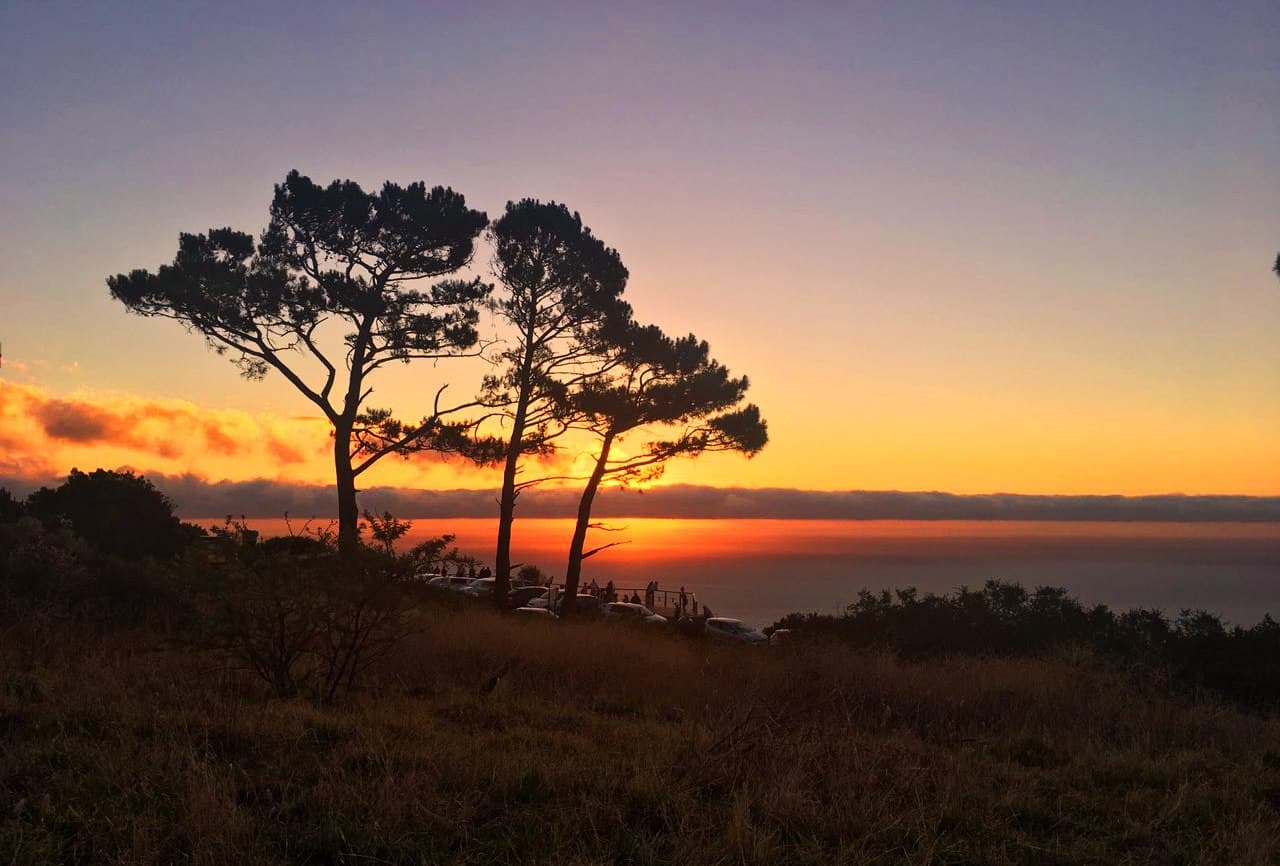
Explore Signal Hill
With views of the sparkling and surging Atlantic Ocean, Table Bay and back to Cape Town, Signal Hill is one of the most scenic spots in town. A mere five minutes westward of downtown, the 1150ft (350m) summit is connected along the ridge to Lion’s Head. Once a spot to flag down approaching ships, Signal Hill lays claim to being the top spot in Cape Town to watch the sunset.
Without having to walk an inch, you can drive from Cape Town right up to the epic viewpoint, from which cannons fire a single shot each day at 12pm. The so-called Noon Gun helped provide the ships anchored in the harbor a time reference. Visitors can arrive long before sunset and take part in a presentation on the historic munition at the Lion Battery.
Having arrived early, you won’t have any problem scoring a park as spots quickly fill up at golden hour. From your lofty perch, you can watch the sun fall behind the horizon as the Cape Town skyline lights up in the valley below.
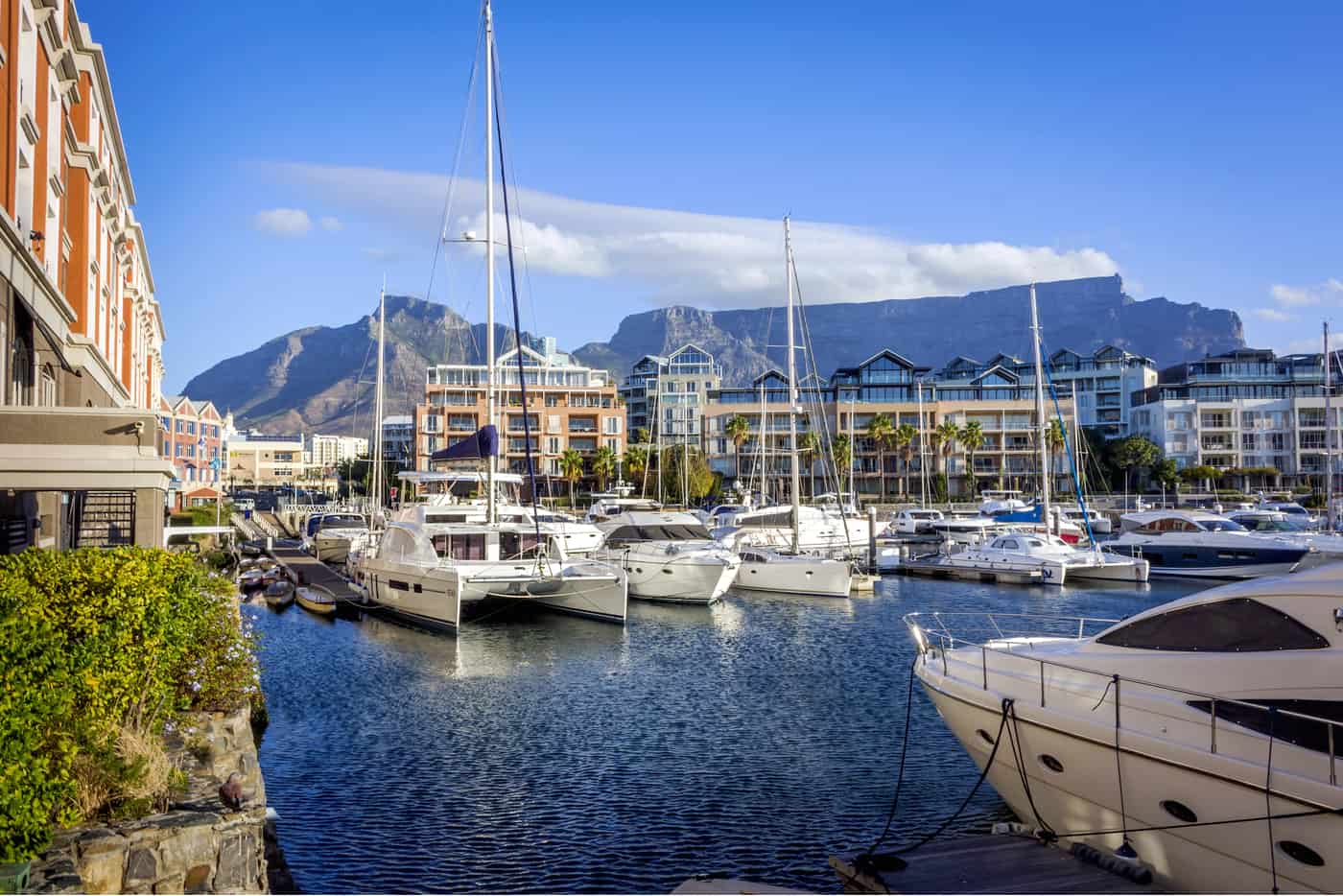
Spend time on the harborfront
Combine the buzz of downtown with even more shopping, restaurants and bars on the V&A Waterfront. Comprising the Victoria and Alfred harbors, this district in Cape Town has come a long way from its roots as a humble fishing port. Visitors and travelers alike mingle in the repurposed warehouses that have been at the forefront of the waterfront’s rejuvenation.
Visitors can walk along the bay and enjoy breathtaking views of the harbors along with the city skyline, which is a contrast of silhouettes and warm lights at sunset. Between all the shopping and eating, leave plenty of time to visit the many attractions here, including the Two Oceans Aquarium and the Springbok Experience Rugby Museum. The latter guides you through the history of the nation’s rugby team through a series of immersive hands-on exhibits.
Finish by riding the Cape Wheel, a giant observation wheel that will elevate you above the waterfront for expansive views in every direction.
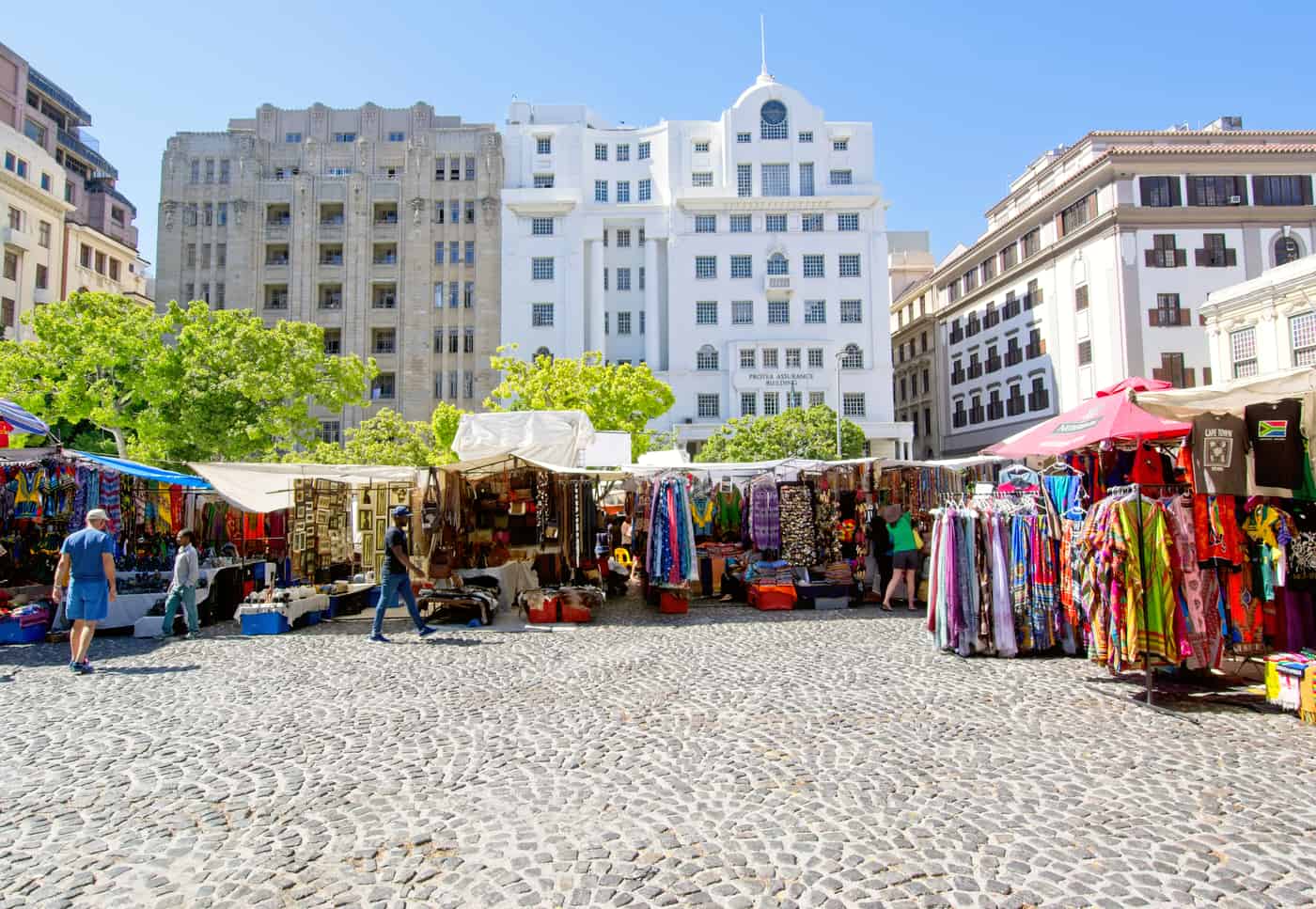
Shop in Greenmarket Square
Within walking distance of the Victoria and Alfred Waterfront, Greenmarket Square is a lively cobblestone plaza with a long history. The square is one of the oldest in South Africa and was once a slave market. Now transformed into a cultural hub, Greenmarket Square is packed with local vendors selling hand-crafted ornaments, colorful fabrics and local art.
As you wander between the stalls, the tunes of buskers ring through the air. In multiple directions, you’ll be able to see street performers show off their many skills to wide-eyed onlookers. See anything from pantomimes to group dances, which all add some flavor to the atmosphere, making Greenmarket one of the best in Cape Town.
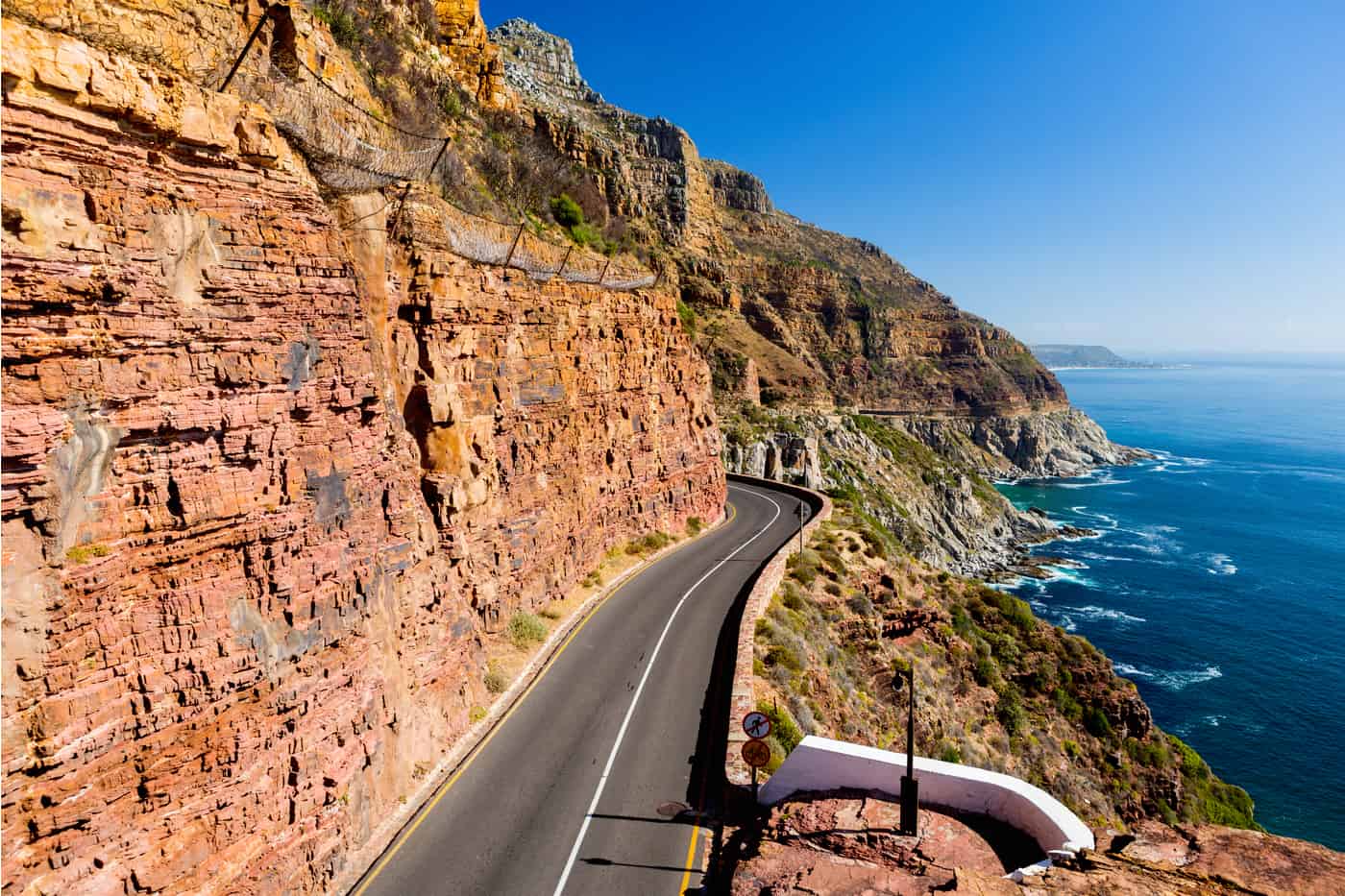
Go on a road trip
On your travels, you’ll often be faced with the old conundrum of whether to hire a car. While you can get around Cape Town without one, you’ll want to get yourself a set of wheels for at least one day. 15 miles from downtown, one of the great coastal drives begins.
Chapman’s Peak Drive, known simply as “Chappies” by residents, showcases the spectacular southern coastline of South Africa. Beginning in Noordhoek, the short and sweet 6 mile (9km) journey traverses the rugged coast which rises steeply out of the deep blue ocean. Along the way, you’ll steer in and away from the cliff 114 times as you caress the cliff’s edge.
At times you’ll be 1640ft (500m) above the water below. So drivers will need some nerves of steel and passengers shouldn’t be prone to motion sickness. Before reaching Hout Bay, you’ll pass Chapman’s Peak Point, a popular place to watch the sunset. Here a community of “sundowners” gather to enjoy golden hour while nursing a refreshing drink.
Don’t want to drive? Hop on a small-group tour ($47) that takes you along along Chapman’s Peak, making stops at the Cape of Good Hope, Cape Point, Simon’s Town, and even provides you with the option to head to Boulders Beach to see the penguins!
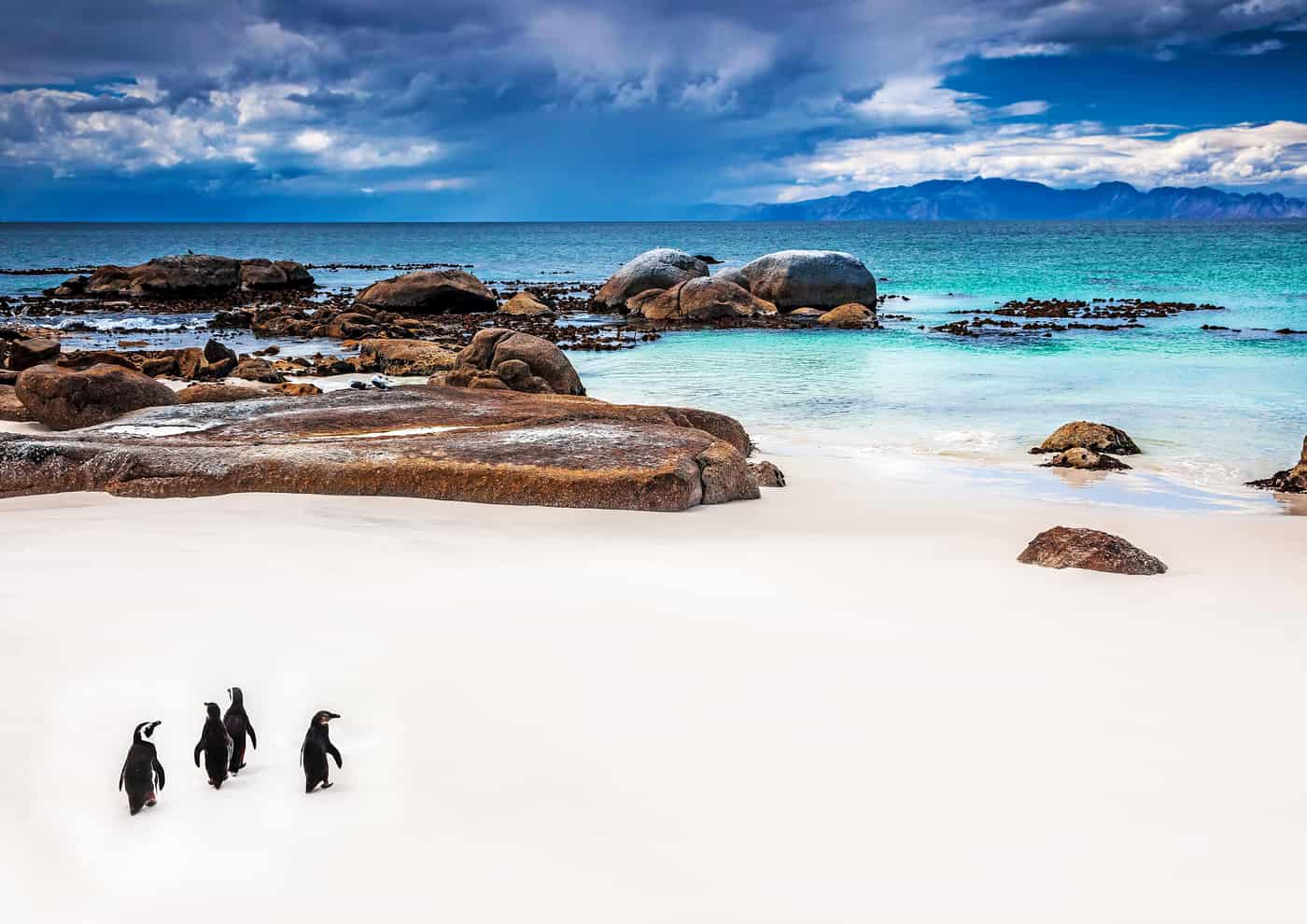
See the penguins at Boulders Beach
Speaking of road trips, you’ll want to keep the car handy for your one hour drive to Boulders Beach. Here, in their natural environment, over 2000 African penguins scatter about the white sands. The breeding colony within the Table Mountain National Park Marine Protected Area has helped to sustain the endangered species.
A lot of penguin experiences are held from a distance, where guests can watch it unfold from the bleachers. However, Boulders Beach is different. Named after the giant boulders that are spread along the beach, visitors can even swim in the water, which is noticeably warmer than Camps Bay.
The penguins have grown accustomed to human presence over time, and while you shouldn’t get too close, you will be able to share the sand with the tuxedoed waddlers for a magical wildlife experience.
To avoid the drive, sign up for the Penguin Explorer Tour ($30) to visit the beach along with the Cape of Good Hope.
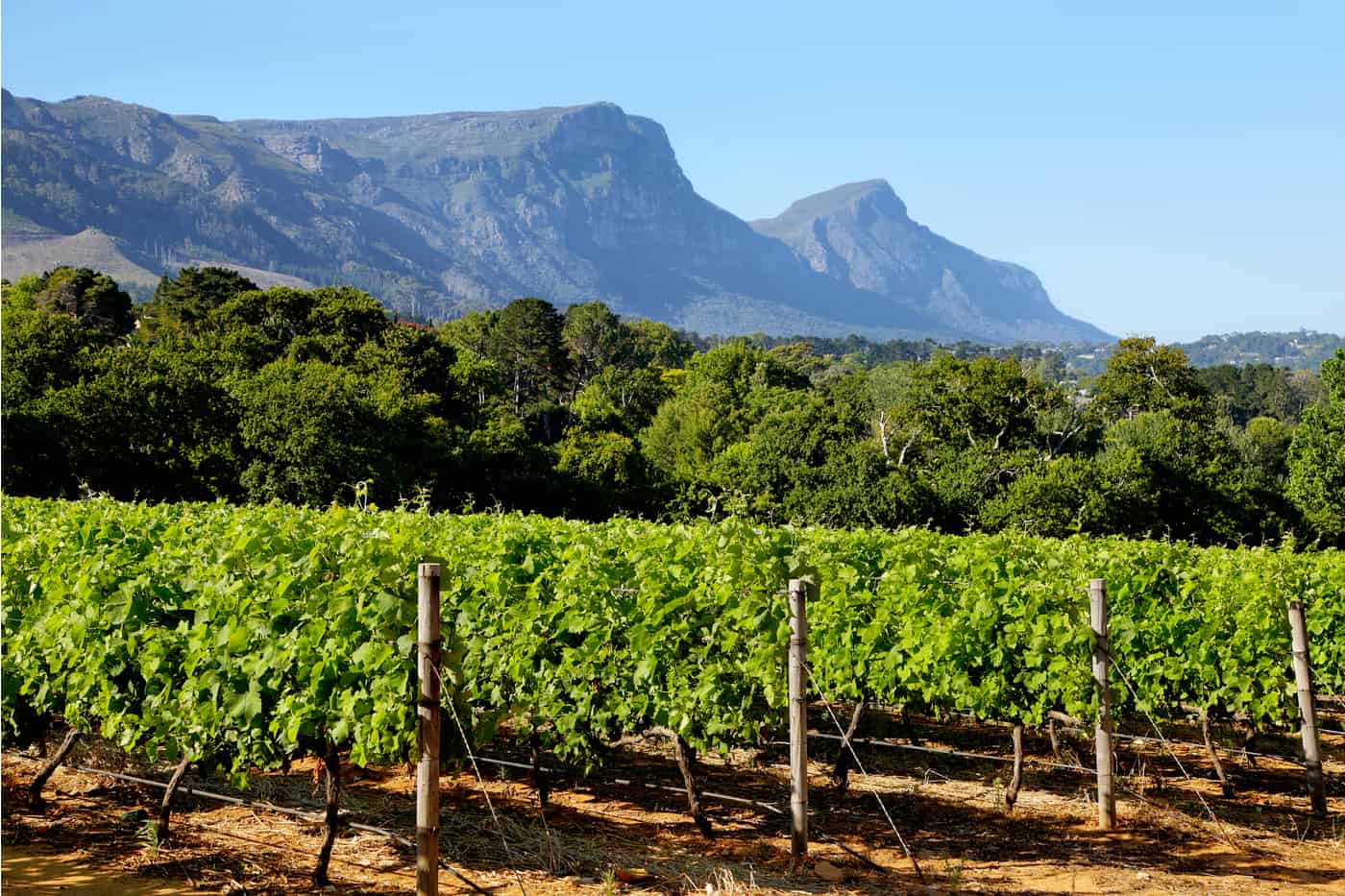
Experience the local wineries
In a climate primed for grape growing, Constantia Valley continues to flourish, producing well-rounded reds and sharp whites. With its beginnings dating back to the 1600s, a visit to the valley comes with more than just amazing wine. You’ll have the chance to explore a historic-soaked town lined with mansions and oak-lined streets.
Just 20 minutes from Cape Town, it’s easy to reach the renowned valley as the busy streets quickly make way from rows of vineyards and the gorgeous countryside. A visit to each vineyard comes with a journey through forests along winding mountain roads or open meadows interrupted by historic homes.
The oldest vineyard in Constantia Valley is Groot Constantia. Over its storied life, the winery has hosted such figures as King Louis Phillipe, Jane Austen and even Napoleon Bonaparte. Its expansive property stretches on as far as the eye can see, specializing in delicious dessert wines.
There are nine wineries on the Constantia Valley wine route, but forego the driving and enjoy a private tour ($137) to four vineyards, including Groot Constantia.
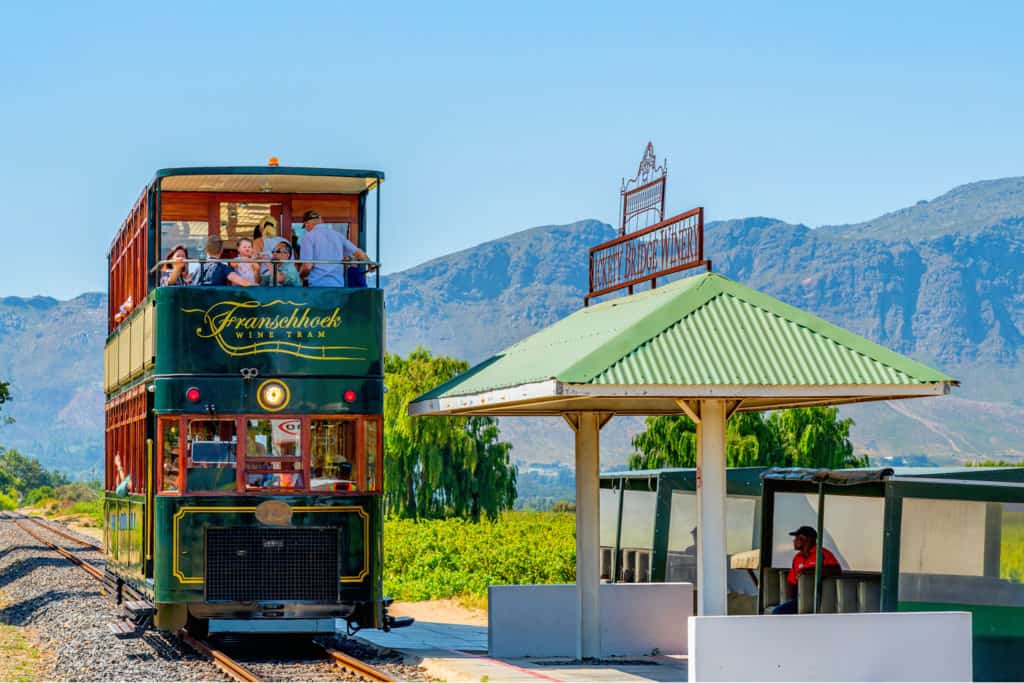
Ride the Franschhoek Wine Tram
South Africa’s wine regions don’t begin and end with Constantia Valley. In fact, less than an hour from Cape Town are the enchanting, wine-growing towns of Stellenbosch and Franschhoek. The latter is the “Gourmet Capital of South Africa” and boasts one of the more unique ways to explore a wine region.
The Franschhoek Wine Tram functions as a hop-on-hop-off tram that meanders by some of the top wineries in the region. The tram creates a loop through the valley allowing guests to come and go as they please before eventually ending up where they started, without having to figure out who the D.D. is.
With eight wineries to choose from, you can spend a whole day enjoying the scenery, taking a cellar tour and enjoying world class wine and food. To take all the worry out of the journey from Cape Town, book this added return transport option ($39) from the city.
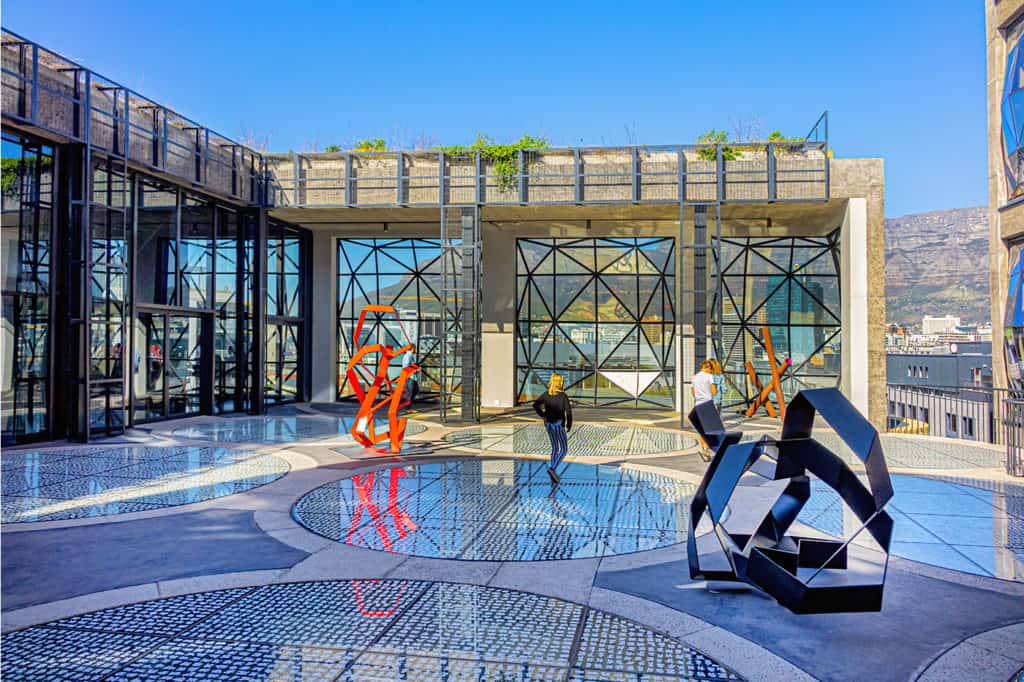
Visit the Zeitz Museum of Contemporary Art
Housing the most complete contemporary art collection not just in South Africa but throughout the African continent, the Zeitz MOCAA is a must-visit for art aficionados and casual fans alike. Through its brief history (the museum opened in 2017), it has grown in stature to find itself held alongside the Tate in London and the Museum of Modern Art in New York City.
The museum was named after Jochen Zeitz, once the CEO of Puma, who donated much of his private collection. Today visitors can enjoy an expansive collection of art within a giant grain silo, one of the more unique gallery spaces you’ll ever visit. Across nine floors, you can bounce between more than 100 halls, each with their own intricate pieces and story to tell.
A highlight of Zeitz MOCAA is the woven wall created by El Anatsui, which is made purely from cast-off objects and fabrics. Photography is also a strong point in the museum, with stunning images from across Africa. Skip-the-line entrance is priced at $14.
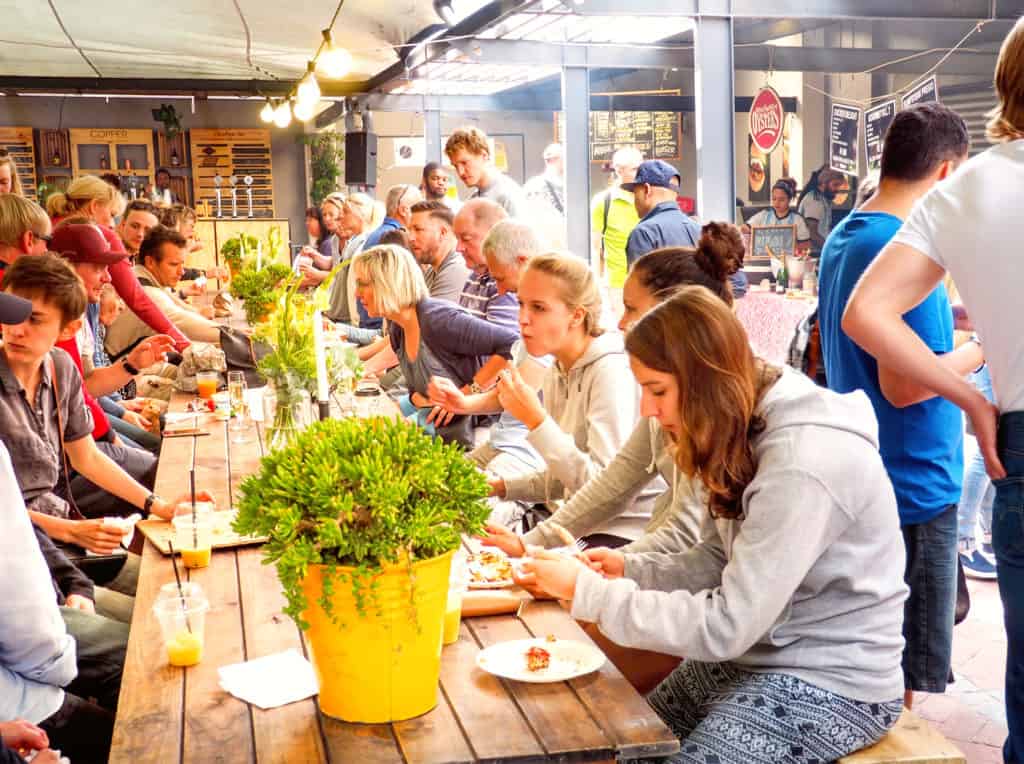
Embark on a walking food tour
There’s no better way to get to know the places you travel to than through the local cuisine. Often new foods can be daunting, leading travelers to take the safer route and stick to what they know. But one way to break down the barrier and open up a new world of cuisine and culture is to experience it all alongside a local.
Cape Town’s food scene is influenced by indigenous communities along with Europe, Indonesia and Malaysia. The variety of nationalities adds a unique flavor to the city’s cuisine, opening up the door for a whole range of dishes to enjoy. Some of the traditional eats include al fresco braii (BBQ meat), melktert (custard-filled pastry) and Cape Malay curry.
On this walking food tour ($65) embark on a four hour culinary adventure through many parts of Cape Town, discovering indigenous cuisine and styles brought in from all around the world.
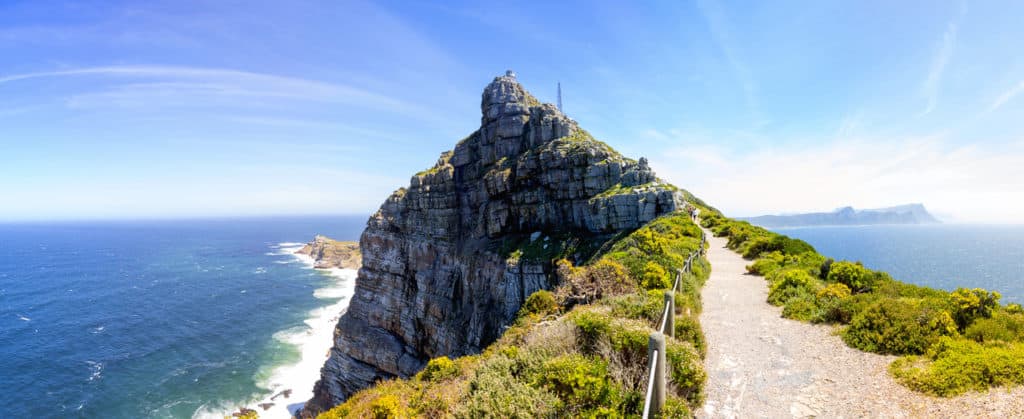
Stand on Cape Point
No time in Cape Town would be complete without journeying to what feels like the end of the world. Cape Point is alongside the Cape of Good Hope and juts out into the Southern Ocean, with nothing between the point and the ice-swept lands of Antarctica. The point marks the end of the Table Mountains National Park and also falls within the Cape Flora Region, making Cape Point more than just an unforgettable view.
The trip to the point will take you around an hour and twenty minutes as you drive past Simon’s Town and Boulder Beach along the Cape Peninsula. Along the way, see the surf crash down in Muizenberg before the small towns disappear, leaving nothing but pristine landscapes teeming with wildlife and diverse flora.
From the point, head to the Cape Point Lighthouse, which you can reach via the Flying Dutchman cable car. Better yet, get your steps in by completing the hiking trail to the spellbinding viewpoint. From your elevated platform, keep your eye out for whales or try to spot baboons and zebras in the nature below.
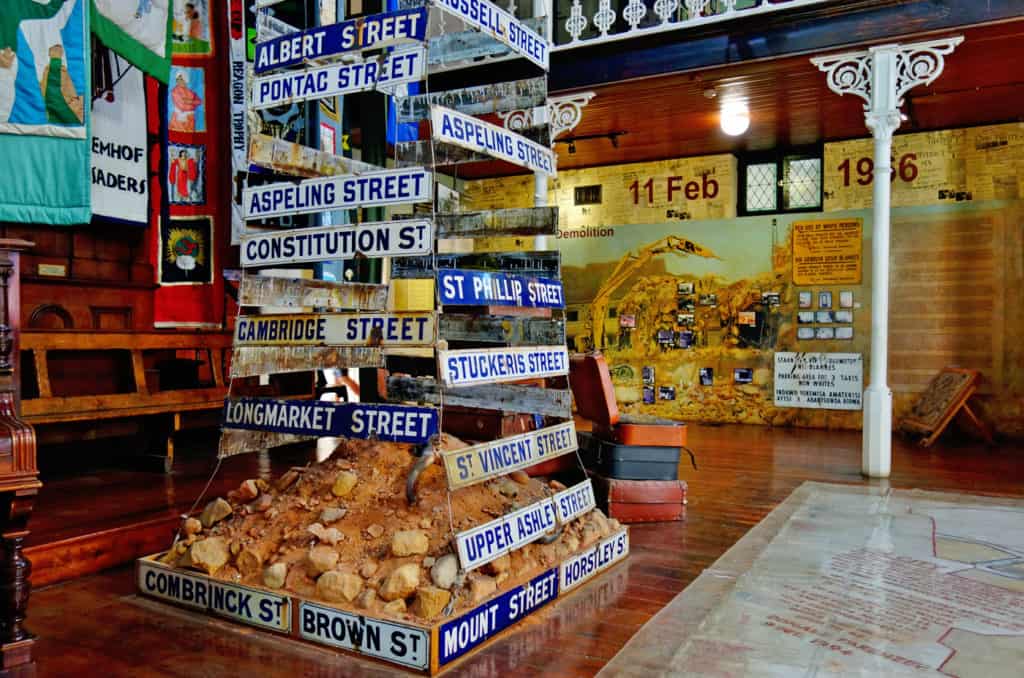
Explore the District Six Museum
Over 70,000 people of diverse ethnicity called District Six home in 1966. The neighborhood itself made up a tenth of Cape Town’s population. Suddenly they became displaced as the national government signed a decree stating that the neighborhood was to become white-only. With the apartheid in full swing, many had no choice but to move to the fringes of Cape Town to live in the townships that were set up in Cape Flats.
Almost 30 years later, in 1994, the District Six Museum was setup to commemorate the 70,000 lives that were forever changed and to educate the public in the hope that history won’t be repeated. The exhibits recount the stories of the displaced with passion and empathy. The somber experience is an important one in order to learn the trials that the people living in Cape Town have gone through.
To get the most out of the experience, sign up for a guided tour led by the museum’s knowledgeable guides.
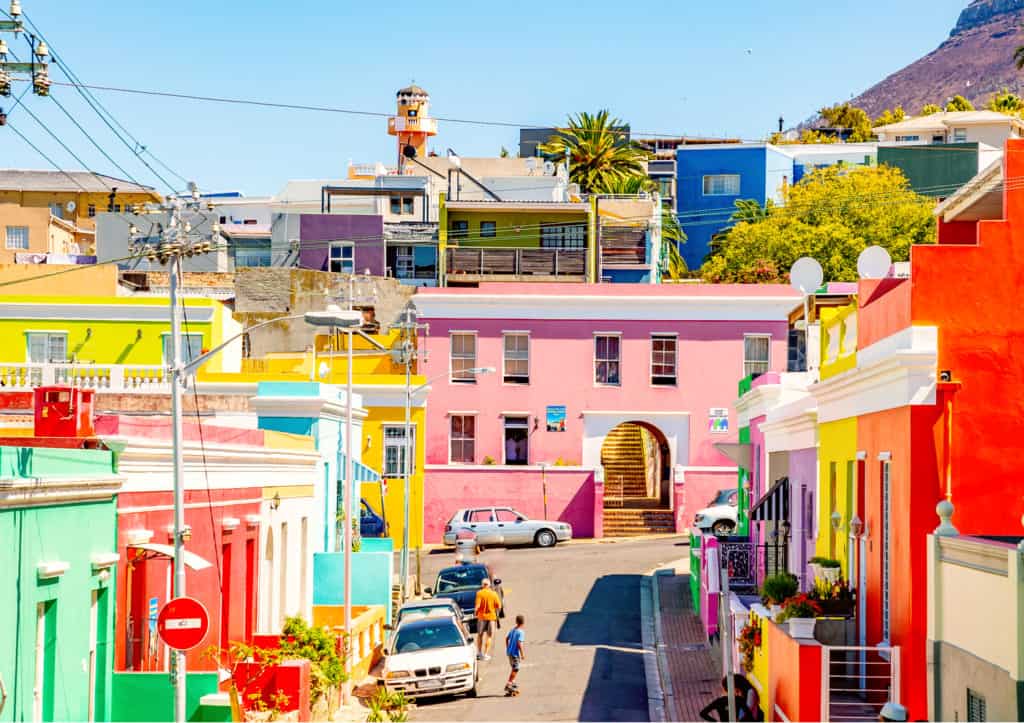
Wander through Bo-Kaap
The kaleidoscopic houses of Bo-Kaap, also known as Cape Malay, make it the coolest neighborhood in Cape Town to walk around. It’s an area that has been well-preserved throughout the years, with the multi-colored streets creating amazing photo opportunities. But behind the bright walls is a town with a fascinating past and an equally enthralling cuisine.
In the 17th century, Dutch settlers brought over slaves from South East Asian countries, particularly Indonesia and Malaysia along with several African countries. Many of the descendants of these slaves make up the bulk of Cape Town’s Muslim community which today reside in Bo-Kaap. The complex history is on full display at the Bo-Kaap Museum while you can sample some of the best Cape Malay curry right here along the local streets.
Being so close to downtown and the V&A Waterfront, it’s easy to arrive in Bo-Kaap on foot. From there, you can feel free to wander and discover the colorful town on a whim.
If you’d love to learn more about the history of this area, combine a Bo Kaap walking tour with a Malay cooking class ($40) inside one of those beautiful colourful buildings!
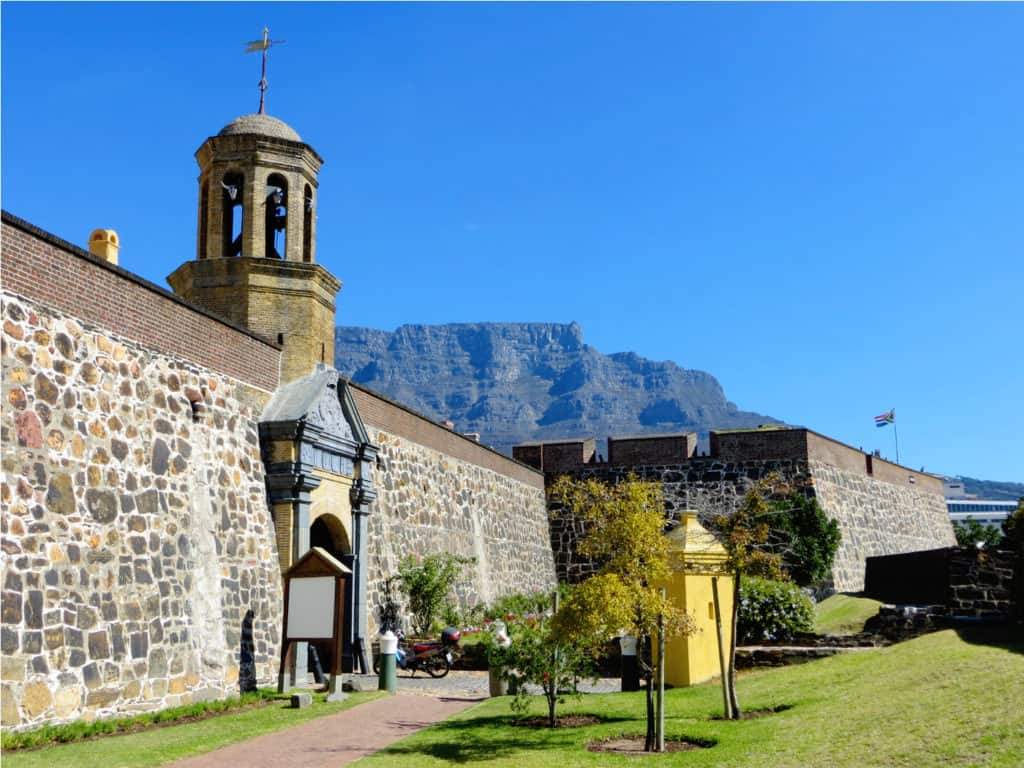
See the Castle of Good Hope
In the center of Cape Town is the oldest stone building in South Africa that still stands to this day. Built over 14 years and complete in 1679, the Castle of Good Hope was originally the residence of the Governor, and its walls were used as protection for the nation’s first settlers.
The star-shaped design, which resembles the Pentagon, was meant to hold off would-be attackers but never once fell under fire. This allowed the colonial city to develop commerce and trade with the help of the Dutch East India Company.
Today, visitors can explore the castle’s several museums, including the Military Museum, which dives into the history of the castle as a military stronghold. Wander through the castle on a guided tour to gain a greater appreciation for the architecture, the spacious grounds, and the surrounding moat. You can even tour the castle in a horse-drawn carriage.
The best time to visit the Castle of Good Hope is during the Key Ceremony held Monday to Friday. The highlight of the ceremony being the firing of the Signal Cannon.
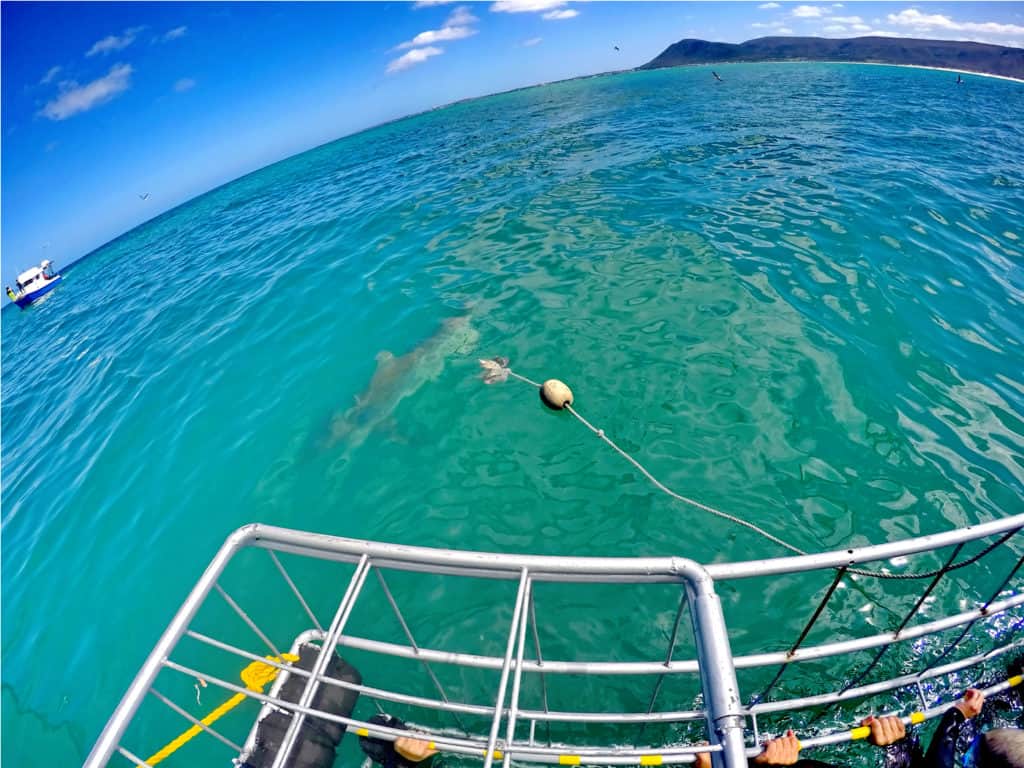
Go shark diving
The water may be icy-cold, but the action promises to be hot on this once-in-a-lifetime adventure. While shark sightings have declined around Cape Hope over the last few years, it remains one of the best places in the world to go cage diving with sharks. Depending on the sightings, you can venture beneath the surface off of Dyer Island, in Mossel Bay or from Gansbaii.
Under the water, away from the safety of dry land, you’ll experience life in the world of sharks. Albeit safely behind reinforced bars of your cage. As the adrenalin continues to soaring and you can feel your heart beat against your chest. Wait in silence as the beast appears from the depth of the ocean and rushes towards you with a vengeance.
To give yourself the best chance to come face to face with sharks, join a tour between April and October, when they make their way to South Africa in greater numbers.
An eco-friendly cage diving experience with sharks is priced at $100 per person.
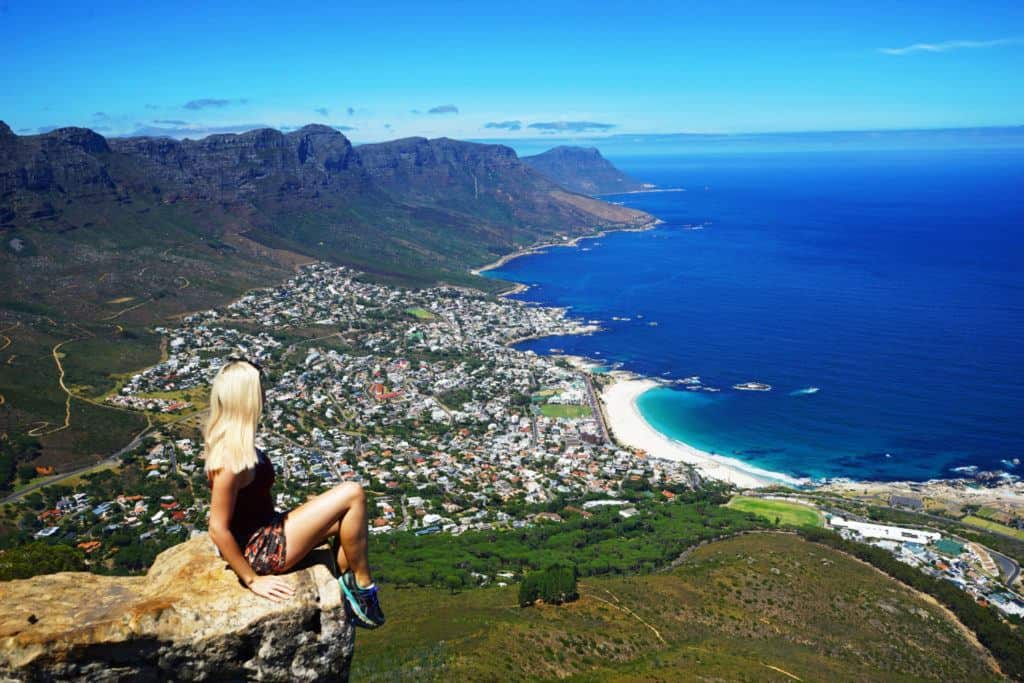
Hike Lion’s Head
Equally stunning but less famous, Lion’s Head is the unheralded neighbor of Table Mountain. Hiking to the peak offers a beginner-friendly experience that will put a smile on the face of those daunted by the trek up Table Mountain. But importantly, the views from Lion’s Head don’t miss.
To reach the trailhead, make your way along Signal Road where you’ll be greeted by a food truck that makes for the perfect pre-hike snack or celebratory treat. From there you’ll begin the climb, which covers 3 miles (4.8km) and 1600ft of elevation gain. It may sound intimidating, but with plenty of benches and relaxing viewpoints, not to mention a well-graded trail, you’ll reach the summit in around 90 minutes.
Lion’s Head stands alone, offering those that reach the stunning heights epic 360-degree views of oceans, beaches, towns and mountains. The trail is popular at sunset, but for a quiet and beautiful hike, get up bright and early for a sunrise trek.
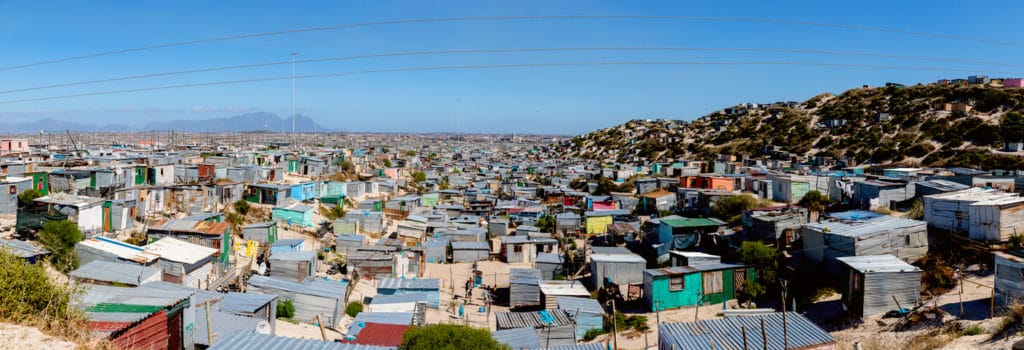
Visit a local Township
After spending some time exploring the District Six Museum and Bo-Kaap, you’ll be interested in exploring more neighborhoods around Cape Town. Offering an authentic local experience, the townships showcase the other side of the city and the disparity that remains to this day. They sprung up around Cape Town throughout the 20th century because of segregation, with the District Six being a notable example.
The unique experience will be the exclamation point on your time learning about South African history and culture as you get the chance to wander through the community. On this walking tour, you can discover the culture that first grew out of necessity and then flourished through the years. Explore Khayelitsha, the largest and fastest growing township in Cape Town.
A half-day guided tour is priced at $45.
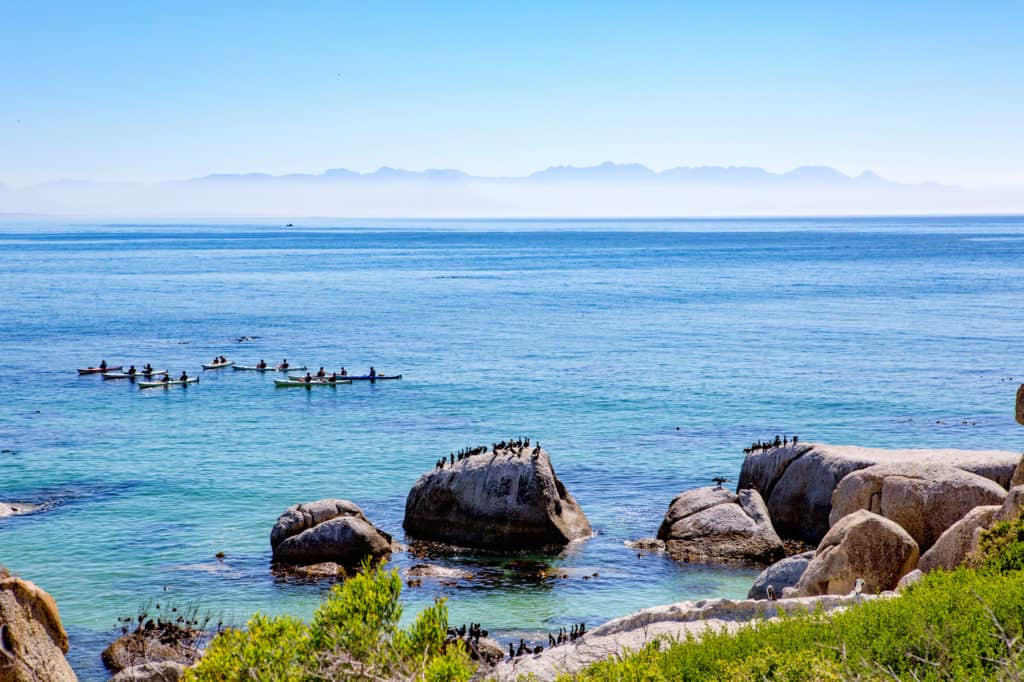
Go kayaking on the bay
You’ve seen Cape Town from above and the bay from the V&A Waterfront, so all that’s left is to experience the bay on the water with the skyline and Table Mountain, creating an epic backdrop. While you can see the bay and the city from your ferry to Robben Island, there’s something special about paddling around in your own kayak.
Be dwarfed by the surrounding scenery and as paddle along. Keep an eye out for dolphins dipping above the surface or riding the waves that swing through the bay at certain times of year. Between June and November, you may even come across a giant humpback whale who have come to town to feast on plankton and shrimp.
Do all that and more on this Kayak Tour ($23) that departs from the waterfront, providing a unique perspective of the city and up close experiences with the natural world.
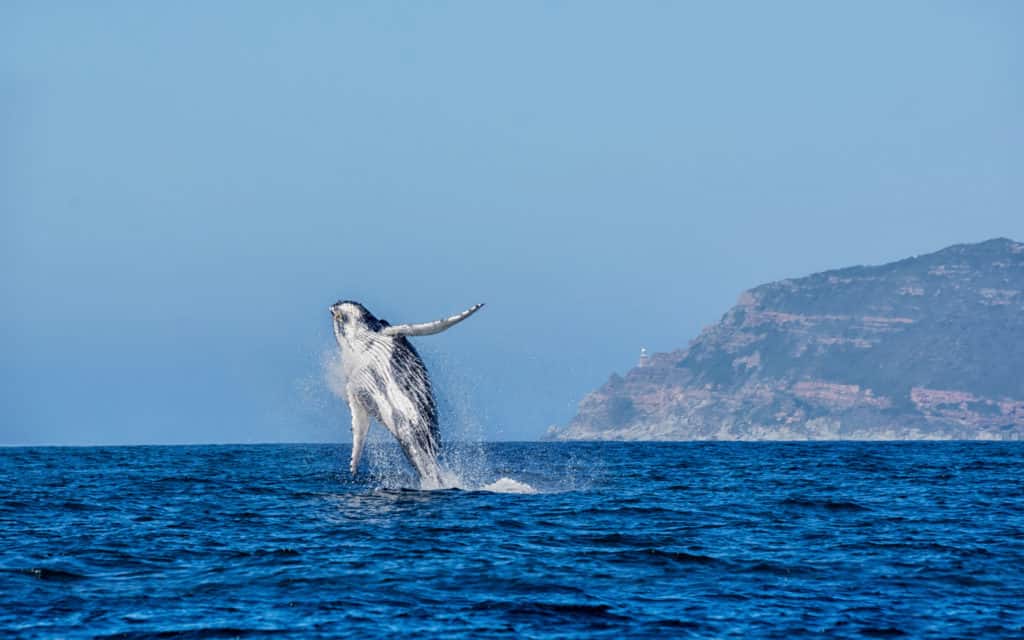
Go whale watching
90 minutes southeast of Cape Town, Hermanus is one of the top whale watching destinations in the world. Southern right whales swim along the coast in great numbers from June to November each year. The last three months of the season give visitors that greatest chance of seeing the majestic animals from the shoreline. So if kayaking in the bay didn’t bring you any sightings, be sure to make the trip.
There are multiple ways to see the whales from dry land, which is handy because the bulk of these months make up South Africa’s winter. One way is to put on your walking shoes and wander down the Cliff Path, a 7.5 mile (12km) coastal trail with constant views of the water below. Other options include heading to the viewing platforms in Old Harbor along with Sievers Point.
However, for a close-up experience, you can’t beat joining a cruise that departs regularly from Hermanus. If you’ve arrived in September, the local whale festival attracts over 150,000 visitors for the weeklong celebration.
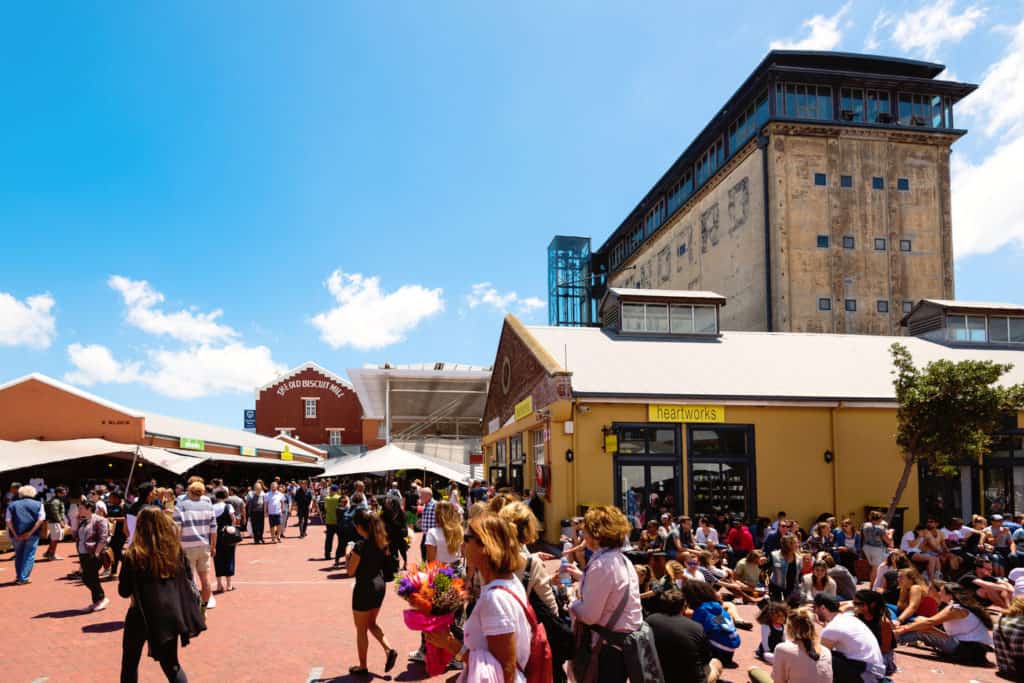
Explore the Woodstock neighborhood
One of Cape Town’s oldest neighborhoods, Woodstock has become the trendiest part of town. The tale of an industrial district full of old warehouse turning itself into an art haven teeming with eclectic cafes is common. But Woodstock remains worth a visit thanks to its entrancing street art with dozens of captivating murals.
Wander the narrow streets and let your instincts guide you as you jump between boutique stores selling vintage wear, some of the best restaurants in town and independent galleries, all the while noting each passing mural. Before heading back downtown, pop into the Old Biscuit Mill a collaboration of shops, workspaces and yoga retreats.
In Cape Town, Don’t Forget Travel Insurance!
If you’ve read any other posts on Never Ending Footsteps, you’ll know that I’m a great believer in travelling with travel insurance. I’ve seen far too many Go Fund Me campaigns from destitute backpackers that are unexpectedly stranded in a foreign country after a scooter accident/being attacked/breaking a leg with no way of getting home or paying for their healthcare. These costs can quickly land you with a six-figure bill to pay at the end of it.
In short, if you can’t afford travel insurance, you can’t afford to travel.
Travel insurance will cover you if your flight is cancelled and you need to book a new one, if your luggage gets lost and you need to replace your belongings, if you suddenly get struck down by appendicitis and have to be hospitalised, or discover a family member has died and you need to get home immediately. If you fall seriously ill, your insurance will cover the costs to fly you home to receive medical treatment.
I use SafetyWing as my travel insurance provider, and recommend them for trips to South Africa. Firstly, they’re one of the few companies out there who will actually cover you if you contract COVID-19. On top of that, they provide worldwide coverage, don’t require you to have a return ticket, and even allow you to buy coverage after you’ve left home. If you’re on a long-term trip, you can pay monthly instead of up-front, and can cancel at any time. Finally, they’re more affordable than the competition, and have a clear, easy-to-understand pricing structure, which is always appreciated.
With SafetyWing, you’ll pay $1.50 a day for travel insurance.
Related Articles on South Africa
🇿🇦 8 Reasons Why I Fell in Love With Cape Town
🥾 Hiking Lions Head: A South Africa Highlight






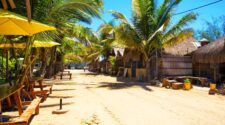
One of my biggest frustrations with solo travel is that it can be lonely sometimes. It can also feel awkward when you go out and are constantly surrounded by couples.
I’ve definitely experienced that! Even as an introvert, there have been times when I’ve just wanted some company but haven’t been able to find any.
It’s a real shame that you didn’t get to do any of the tours you’d planned in Durban. It looks like a beautiful city, I’ve always wanted to visit. But then taking a break once in a while and recharging is also important. If you do too much too soon you don’t end up enjoying it anyway. I can’t wait to read the rest of your South Africa posts, it’s somewhere I’ve always wanted to visit but too scared to go alone.
I’m looking forward to writing more about South Africa! It’s a little bit more intimidating than the U.S. or Western European countries, and you need to take a few more precautions, but on the whole, I felt safe there and fell in love with the country.
Ugh I hate the single supplement nonsense! I also miss having someone to share the experiences with – let’s face it, it’s extra special when you’re sharing an amazing sight/sunset etc with someone you love. Also when things go wrong, which they invariably do while on the road, it’s so much more easier when there’s someone to share the burden with you.
Saying all this, I still wouldn’t give up solo travel. I’ve become a much stronger person because of it.
That’s so true! It’s funny, but I’ve noticed every time I travel somewhere alone, I end up just wanting to return with Dave so that I can experience it with him.
But like you, I’d never give up solo travel entirely!
This is so frustrating! I travel with my partner the majority of the time and we run into “at least 8 people need to have booked this tour” type things! So annoying!
At least you had some time to relax, unwind, shop and tan! :)
It’s really frustrating! I know they have to cover their costs, but you’d think they’d still make a profit if one person came along.
It’s especially annoying when it’s a big tour, like you mentioned. I was looking at doing an overland tour in Mozambique and I would have had to pay double as a solo traveller and they had 12 other people coming along, too.
So frustrating! That’s a shame about the Lesotho tours too – I stayed in the highest pub in Africa for 3 nights and got to wander through the village and do independent hikes which was a great way to experience the area and the Sani Pass was amazing. Glad you had a good time anyway – it is so nice sometimes to just be able to relax
That sounds like a much better way to see some of the country! It looks beautiful, so I’ll make sure I spend at least several days there when I next get the opportunity to visit.
I can so relate to this. I was in South Africa last year and had a few days in JNB before joining a tour and I found it the hardest place I have ever been to book a tour as a solo traveler. I flat out refuse to pay double just for me and I finally found two companies that I only had to pay slightly more as a solo traveler. While I wasn’t thrilled in theory with this, the exchange rate is very good against the USD, and it was the only way I could do what I wanted.
You didn’t miss much in Durban, It is just a tourist beach town. I was thankful I only had 1 day there, it was more then enough.
Oh, that’s so interesting you had a similar experience in South Africa. And good to know I didn’t miss much — I always feel guilty if I don’t make much of an effort to fully explore the place I’m in.
That’s terrible… The fact that all tours require a minimum of two is very limiting! It’s a good tip that if I would want to go there, I’d have to stay at a hostel. I wouldn’t mind doing that if I would know it paid off in the end!
Yeah, it’s so frustrating! And it wasn’t like I was there in low season, either — I was visiting in the middle of summer. But for whatever reason, nobody else was signing up for tours and that meant I had to miss out, sadface.
I made the mistake of not researching the tour to Lesotho properly, I was so sure I’m not allowed to go there without the visa so when I was offered a chance to go anyway the idea of visiting a new country won with my common sense hence the uncomfortable tour. The views were definitely spectacular but so not worth all the bad feelings I’ve had to deal with. I’m glad you didn’t go after all, I’m sure you’d have felt the same way…
I’m impressed you’ve done so much traveling without driving! I don’t think I realized you’re not renting cars at some of these places. I love driving in foreign countries, but I come from a driving culture where you can’t even get to school without a car.
I don’t know about SA specifically, but there are some places where hiring a private driver/tour guide isn’t that much more than a single tour ticket and you don’t have to deal with other travelers. =)
Yeah! Most of the time, public transport is way easier and cheaper for getting from place to place. I’ve only rented a car maybe three times in six years of travel! But it would definitely improve my solo travels if I felt confident enough to rent a car in a foreign country.
Would you recommend hiring a car and driving in Mozambique?
It’s hard to know without having done it myself. From what I’ve heard, it’s a bit of a pain in the ass in Mozambique because the police are so corrupt that you’ll constantly be pulled over and asked to pay bribes. But you get the benefits of saving money (unless you take chapas), having more control, and seeing more of the country. There is a Facebook group for driving in Mozambique that could be a useful resource for you: https://www.facebook.com/groups/DriveMoz/
Argh That’s so frustrating. I had the same thing happen with a free walking tour, where I was the only person to turn up for it, as it was in low season. They cancelled the tour and wouldn’t run it with me.
Oh man, really? I know those tours are tip-based, so while the person running it wouldn’t have made very much money from just one tip, it’s still technically advertised as a free tour. The number of people who turn up shouldn’t affect whether it runs or not.
I’ve had that experience before. I wanted to do a city walking tour of Leon, Nicaragua but no one else had booked it so I offered to pay a bit more if the guide would take me out anyway. It wasn’t double and it was still an affordable price to me so I didn’t feel *too* bad about it. Figured I was helping the local economy. But it’s frustrating.
I was recently looking at a cool afternoon tea bus tour in London and they didn’t have an option to book for just one person. I tweeted them though and they said that they’d get right on fixing that and to email them or call if I wanted to book a spot for myself. So…it’s something.
So sorry that Durban didn’t work out for you. It must have been awfully frustrating. :(
I tend to do a combination of solo travel, family travel, and travelling with my teen for some quality time. When I travel solo, I prefer to be where lots of people are, so that I can “hang out” with them and get to talk to people, as I like a social envirnoment lol!
However, last year my son and were in Switzerland, and the tour guide didn’t turn up ‘cos we were the only people who booked! And just last week, my husband and I were in Vienna and had booked a group tour. The tour guide didn’t turn up either. And because I’m quite bossy, everyone thought that I was the guide. And I would have done it if I was at home in Berlin lol! :D
Thanks for your honesty in writing this post on travel fails. I know that I’ve had some, too. There was the time that I booked a tour with some friends to the scenic Yeosoo area of South Korea with lots of hiking/temples… only to find it covered with fog and rain almost the entire time.
Never went to Durban when I was in SA, but I loved Jo-burg. Most of the attractions, however, were ones that you had to drive to (like you mentioned).
Aww, man, I hate it when bad weather ruins a trip.
This made me so sad… I was born and raised in Durban! And while Durban is so different to Cape Town (I’ve been there multiple times), it’s a city that makes you work to see her beauties! If you ever have the chance to, come back again and ask me for some addresses of trendy markets, local art galleries, artisan bakeries, and amazing cafés! Umhlanga is beautiful… but just 20 minutes away is a completely different world. And forget yo the hill (about 35 minutes away) is a town with dog parks and great restaurants!
I absolutely will do! I’m already hoping to return to South Africa in 2018 :-)
I’m on my way to South Africa next week and Durban for a few days. Can I get those address’ to the markets and restaurants?
?Olivia
The chances of the commenter returning to this post seven months later and seeing your comment is unfortunately very slim.
I felt bad for you reading this post. I still have it on my list for next year and yeah I am interested in the same tours and also saw them on Viator. Look slike I really need to find a second person or otherwise I will have the same experience as you had.
It alos mad eme laugh cause you write it in a funny way :) lol but then it made me feel bad for you. I hope you will have better travel experiences the next year.
cheers
Ha! Thanks. No need to feel bad for me — it wasn’t too bad compared to some of the other experiences I’ve had on my travels!
Really a shame about your time in durban. I’ve lived in durban for my whole life and done most of the things you’ve wanted to do. It’s different as a local though as you don’t do tours, so I’ve never really been aware of these problems with booking tours.
I will say that being in South Africa, and perhaps especially durban where a lot of attractions are possibly a few hours drive, being able to drive yourself is quite invaluable. That said the roads in South Africa can be quite daunting as driver behaviour is very poor and obedience to rules of the road is seemingly optional.
I do think that viator is perhaps not the best tool to use for tours in South Africa, you’d do better to speak to a local and ask for advice and deal directly with various tour companies.
How locals do game reserves is to take a car, book accommodation, and then mainly self drive around the reserve, the only thing you need to be aware of is keeping your distance from elephants when in the car, and never get out your vehicle. You can then book game drives from the accommodation within the reserve, which will probably be anywhere from 20 dollars to around 50-60 dollars. And that will be useful as it will teach you a lot about the animals that you’d probably not know.
Regarding Lesotho and sani pass, it is a must do. One of the most spectacular drives in the world for sure. There must be tours that don’t offer “exhibitions of the locals”. In fact I’d recommend staying at sani pass backpackers, which is at the bottom of sani pass.
I’d highly recommend going to the drakensberg and hiking/walking and possibly sleeping overnight in a cave. Best to see if a guide can take you, you don’t really want to get lost in the mountains. Or just go there and camp and do short day walks to waterfalls and such.
There are many beautiful beaches near durban. Umhlanga is recommended, umdloti is nice too, and if you want to head further out, there are nice ones in ballito, salt Rock.
I come from Zinkwazi Beach, it is a beautiful little beach village with stunning beaches, I’d recommend staying there if you just want to chill at quiet beaches. It’s a really small town with not much else to do.
There is so many great things in the vacinity of durban, its a real pity about your experience with the lack of tours for singles.